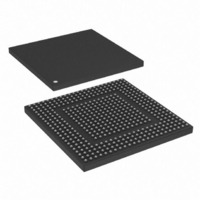MPC8308VMAGD Freescale Semiconductor, MPC8308VMAGD Datasheet - Page 682

MPC8308VMAGD
Manufacturer Part Number
MPC8308VMAGD
Description
MPU POWERQUICC II PRO 473MAPBGA
Manufacturer
Freescale Semiconductor
Datasheets
1.MPC8308VMAGD.pdf
(90 pages)
2.MPC8308VMAGD.pdf
(2 pages)
3.MPC8308VMAGD.pdf
(1170 pages)
4.MPC8308VMAGD.pdf
(14 pages)
Specifications of MPC8308VMAGD
Processor Type
MPC83xx PowerQUICC II Pro 32-Bit
Speed
400MHz
Voltage
1V
Mounting Type
Surface Mount
Package / Case
473-MAPBGA
Product
Network Processor
Data Rate
256 bps
Frequency
400 MHz
Supply Voltage (max)
3.6 V
Supply Voltage (min)
3 V
Supply Current (max)
5 uA
Maximum Operating Temperature
+ 105 C
Minimum Operating Temperature
0 C
Interface
I2C, JTAG, SPI
Mounting Style
SMD/SMT
Lead Free Status / RoHS Status
Lead free / RoHS Compliant
Features
-
Lead Free Status / Rohs Status
Lead free / RoHS Compliant
Available stocks
Company
Part Number
Manufacturer
Quantity
Price
Company:
Part Number:
MPC8308VMAGD
Manufacturer:
FREESCAL
Quantity:
300
Company:
Part Number:
MPC8308VMAGD
Manufacturer:
Freescale Semiconductor
Quantity:
10 000
Part Number:
MPC8308VMAGD
Manufacturer:
FREESCALE
Quantity:
20 000
Company:
Part Number:
MPC8308VMAGD400/266
Manufacturer:
FREESCAL
Quantity:
300
Company:
Part Number:
MPC8308VMAGDA
Manufacturer:
Freescale Semiconductor
Quantity:
10 000
- MPC8308VMAGD PDF datasheet
- MPC8308VMAGD PDF datasheet #2
- MPC8308VMAGD PDF datasheet #3
- MPC8308VMAGD PDF datasheet #4
- Current page: 682 of 1170
- Download datasheet (9Mb)
Universal Serial Bus Interface
13.6.12.2.9 Rebalancing the Periodic Schedule
System software must occasionally adjust a periodic queue head's S-mask and C-mask fields during
operation. This need occurs when adjustments to the periodic schedule create a new bandwidth budget and
one or more queue head's are assigned new execution footprints (that is, new S-mask and C-mask values).
It is imperative that system software must not update these masks to new values in the midst of a split
transaction. In order to avoid any race conditions with the update, the host controller provides a simple
assist to system software. System software sets the Inactivate-on-next-Transaction (I) bit to signal the host
controller that it intends to update the S-mask and C-mask on this queue head. System software then waits
for the host controller to observe the I-bit is set and transitions the Active bit to a zero. The rules for how
and when the host controller clears the Active bit are:
System software must save transfer state before setting the I-bit. This is required so that it can correctly
determine what transfer progress (if any) occurred after the I-bit was set and the host controller executed
it's final bus-transaction and cleared the Active bit.
After system software has updated the S-mask and C-mask, it must then reactivate the queue head. Since
the Active bit and the I-bit cannot be updated with the same write, system software needs to use the
following algorithm to coherently re-activate a queue head that has been stopped using the I-bit.
Setting the Halted bit inhibits the host controller from attempting to advance the queue between the time
the I-bit is cleared and the Active bit is set.
13.6.12.3 Split Transaction Isochronous
Full-speed isochronous transfers are managed using the split-transaction protocol through a USB 2.0
transaction translator in a USB 2.0 hub. The host controller utilizes siTD data structure to support the
special requirements of isochronous split-transactions. This data structure uses the scheduling model of
isochronous TDs (see
model of iTDs) with the contiguous data feature provided by queue heads. This simple arrangement allows
13-104
•
•
•
1. Set the Halted bit, then
2. Clear the I-bit, then
3. Set the Active bit and clear the Halted bit in the same write.
Rule 3: If transitioning from Do_Start Split to Do Complete Split and the current value of
FRINDEX[2–0] is not 6, or currently in Do Complete Split and the current value of
(FRINDEX[2–0]) is not 7, FrameTag is set to FRINDEX[7–3]. This accommodates all other cases
in
If the Active bit is cleared, no action is taken. The host controller does not attempt to advance the
queue when the I-bit is set.
If the Active bit is set and the SplitXState is DoStart (regardless of the value of S-mask), the host
controller simply clears the Active bit. The host controller is not required to write the transfer state
back to the current qTD. Note that if the S-mask indicates that a start-split is scheduled for the
current microframe, the host controller must not issue the start-split bus transaction; it must clear
the Active bit.
Figure
13-53.
Section 13.6.8, “Managing Isochronous Transfers Using iTDs,”
MPC8308 PowerQUICC II Pro Processor Reference Manual, Rev. 0
Freescale Semiconductor
for the operational
Related parts for MPC8308VMAGD
Image
Part Number
Description
Manufacturer
Datasheet
Request
R
Part Number:
Description:
Development Boards & Kits - Other Processors MPC8308-NSG
Manufacturer:
Freescale Semiconductor
Datasheet:

Part Number:
Description:
MCU, MPU & DSP Development Tools For MPC8308 Ethernet USB I2C SPI
Manufacturer:
Freescale Semiconductor
Datasheet:

Part Number:
Description:
MCU, MPU & DSP Development Tools For MPC8308 Ethernet USB 32bit
Manufacturer:
Freescale Semiconductor
Datasheet:
Part Number:
Description:
Mpc8308 Powerquicc Ii Pro Processor Hardware Specification
Manufacturer:
Freescale Semiconductor, Inc
Datasheet:

Part Number:
Description:
BOARD REF DESIGN MPC8308
Manufacturer:
Freescale Semiconductor
Datasheet:

Part Number:
Description:
MPC8308 PowerQUICC II Pro Processor Hardware Specification
Manufacturer:
FREESCALE [Freescale Semiconductor, Inc]
Datasheet:
Part Number:
Description:
Microprocessors - MPU E300 ext tmp Qual266
Manufacturer:
Freescale Semiconductor
Datasheet:
Part Number:
Description:
Microprocessors - MPU E300 ext tmp Qual333
Manufacturer:
Freescale Semiconductor
Datasheet:
Part Number:
Description:
Microprocessors - MPU E300 EXT TEMP PB 400
Manufacturer:
Freescale Semiconductor
Datasheet:
Part Number:
Description:
Microprocessors - MPU E300 MP Pb 266
Manufacturer:
Freescale Semiconductor
Datasheet:
Part Number:
Description:
Microprocessors - MPU E300 MP Pb 400
Manufacturer:
Freescale Semiconductor
Datasheet:
Part Number:
Description:
Microprocessors - MPU E300 MP Pb 333
Manufacturer:
Freescale Semiconductor
Datasheet:
Part Number:
Description:
Manufacturer:
Freescale Semiconductor, Inc
Datasheet:
Part Number:
Description:
Manufacturer:
Freescale Semiconductor, Inc
Datasheet:
Part Number:
Description:
Manufacturer:
Freescale Semiconductor, Inc
Datasheet:











